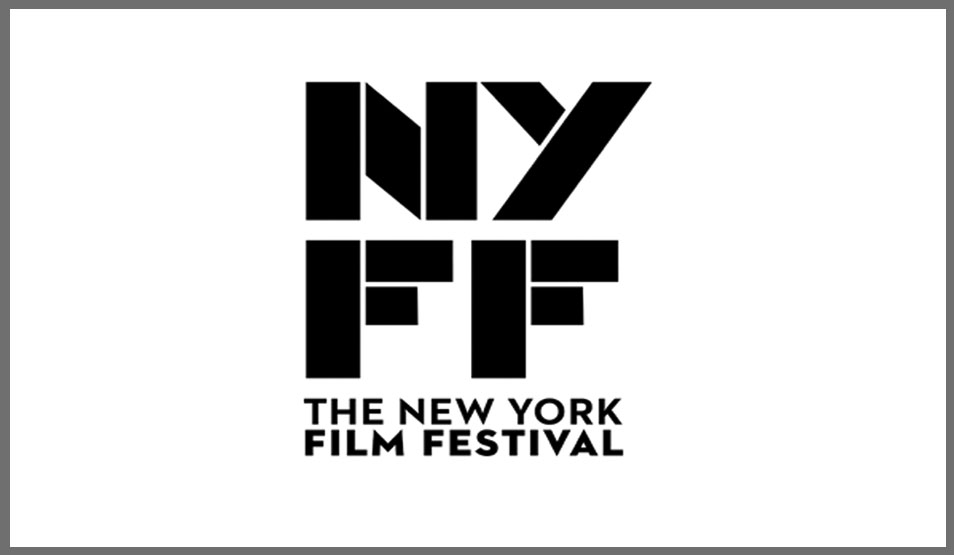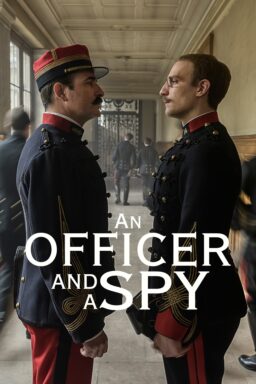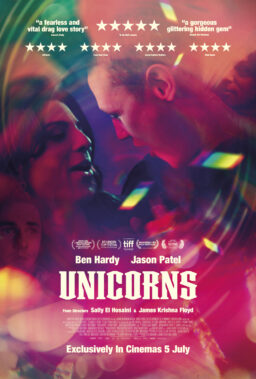The 59th edition of the New York Film Festival struck me as unusually successful. And as soon as that thought crossed my mind—not far into the three-week event—I began wondering what prompted it. Was it the quality of the programming, a strong rebound after a year when the shuttering of the Cannes Film Festival caused a worldwide dearth of prestige cinema? Was it that, unlike last year, critics could see the films on the big screen of the Walter Reade Theatre rather than on their home screens? Or was it the return, in parties, press conferences and public screenings, of that great intangible: people?
While “all of the above” may be the likeliest answer to those questions, the quality of the festival’s best films was the marker that struck me first. And timing had something to do with that. In my first week at the festival, I encountered four films (reported on in my previous festival report) that were intoxicating and impressive enough to become odds-favorites for my 2021 ten-best list: Ryusuke Hamaguchi’s “Drive My Car,” Joel Coen’s “The Tragedy of Macbeth,” Joachim Trier’s “The Worst Person in the World” and Radu Jude’s “Bad Luck Banging or Loony Porn.”
While I didn’t see any subsequent films that topped those four, there were interesting, important works strung throughout the 2021 line-up. And of course, I had my usual crotchety reservations about certain aspects of the programming. Including once again two films by Korea’s soporific Hong Songsoo struck me a bit of eccentricity that borders on the perverse. And while tony big-budget commercial cinema received its due with the inclusion of Denis Villeneuve’s “Dune,” the programmers’ practice of vaunting their own, sometimes precious tastes over their audience’s meant that the Lincoln Center crowds missed the chance to see such internationally acclaimed films as Asghar Farhadi’s “A Hero,” Paolo Sorrentino’s “The Hand of God” and Kenneth Branagh’s “Belfast.”
As the screenings went on, I increasingly reflected on how the cinematic experiences were enhanced by the return of the human element. As in years prior to 2020, press screenings ended with critics pouring into the plaza in front of the Walter Reade and often pooling into small groups to discuss what they’d just seen. There’s no telling to what degree such impromptu conclaves influence the gradual formation of critical consensus, but they frequently provoke some interesting differences of opinion.
One example: To many critics including this one, the auteur who gained the most in this year’s festival was Japan’s Ryusuke Hamaguchi, who had two films in the lineup. I’d been hearing for months from critics who regard Hamaguchi’s “Drive My Car” as the best film they saw at Cannes (such appraisals usually accompanied by sneers and eye-rolling that the festival’s Spike Lee-led jury gave its top prize to the trendy, shallow “Titane”), so it was a surprise to learn of a critical contingent that regards Hamaguchi’s “Wheel of Fortune and Fantasy” as the superior film.
Though I consider both films thoroughly distinctive masterpieces, I am baffled by those who favor the latter film. Perhaps such perceptions have to do with the odd ways one encounters films and forms judgments during a festival. After seeing “Drive My Car” and quickly writing about it for my first festival report, I spent a lot more time thinking about it—and also read the intriguing but rather slight Haruki Murakami story it’s based on—and eventually came to consider it this festival’s (and maybe the year’s) best film.
What ultimately proved so impressive was the psychological depth and greatly expanded narrative architecture that Hamaguchi derived from Murakami’s fiction, together with the film’s elegant stylistic rigor. Telling of the relationship between a theater director and the taciturn young woman assigned to be his driver, characters united by tragic pasts, the film seems to reach deeper and deeper levels of understanding while drawing viewers into its entrancing visual plan, which includes a Kiarostami film’s worth of driving scenes.
To us “Drive My Car” partisans, the film’s superiority to the other Hamaguchi film has a lot to do with the fact that it provides a full account of a single, complex story. “Wheel of Fortune and Fantasy,” in contrast, tells three stories, each about 40 minutes long. All have rich, complex parts for female actors, which may be the source of their appeal for some. The first concerns a young woman who realizes that a friend is falling for a guy who’s her ex; the second tells of a student trying to take revenge on his professor; the third observes two women who think they know each other, in what may be a double case of mistaken identity.
Hamaguchi has said these stories concern “coincidence and imagination.” The more familiar I become with his work, the more fascinated I am with both the exacting, un-showy stylistic control and philosophical resonances of “Wheel of Fortune and Fantasy.” Yet portmanteau films have an Achilles heel in that some segments can seem better than others. Outside the Walter Reade, I heard one young critic opine that the middle story in “Wheel” is weaker than the other two. Will other critics and audiences agree? The conversation around the two Hamaguchi films will surely be one of the arthouse circuit’s most engaging topics as the year goes on. (“Wheel of Fortune and Fantasy” opens in theaters next Friday; “Drive My Car” arrives later in the year.)

Coming out of the press conference for Apichatpong Weerasethakul’s “Memoria,” the first question I had was: why was the event so crowded? Indeed, the Walter Reade was nearly full, a turnout that far exceeded those for other films. One reason surely was that the press conference (the NYFF had few this year, thanks partly to Covid-19) offered critics the chance to hear Weerasethakul and his star, Tilda Swinton, converse about a film that has an unusual history.
I had my own little angle on the that history. A few years back when I served on a FIPRESCI jury at the Cartagena Film Festival, Weerasethakul was being honored there and word got around that he was so taken with Colombia that he wanted to make a film there. In talking with people who’d discussed this possibility with him, I got the distinct impression that the idea wasn’t just a polite gesture directed toward his hosts; he really did want to make a film there.
At their press conference, Weerasethakul and Swinton said that while they’d wanted to do a project together for a long time, importing him to Britain or her to Thailand didn’t seem to make much sense. But Colombia, a place where both were strangers, offered interesting possibilities for a collaboration. Yet that cultural difference also raised the question of whether Weerasethakul is one of those filmmakers whose art is so rooted in his own culture that it can’t be successfully transplanted, of if Colombia might be hospitable new terrain for him.
For the director’s international fans—I’m curious what his Thai admirers might think—“Memoria” almost surely will be taken as good news, proof that his sensibility can indeed thrive in other climes. Of course, as in all of his films, story is minimal here. Swinton plays Jessica, a Scottish orchid farmer visiting Colombia who’s bedeviled by a loud noise (like a giant metal ball hitting concrete) that apparently only she hears. Trying to find out the nature of this aural interloper leads her into various opaque encounters, and eventually out of Bogota and into the verdant Amazon forest. Mostly, this spare narrative provides a pretext for a Weerasethakul’s meditative pacing and distanced visuals (long takes, long-shot compositions), creative sound design and suggestive, sometimes mystical evocations of various cultural and historical associations.
For me, the director’s work is the very definition of an acquired taste. I’ve been following it with a mixture of interest and skepticism since seeing his early features “Blissfully Yours” and “Tropical Malady” at the NYFF, but was finally won over completely by 2015’s “Cemetery of Splendor.” Yet that film was another that suggested festivals are the natural homes for visions as rarefied as Weerasethakul’s, and “Memoria,” which I liked, surely will represent a marketing challenge when it heads into American arthouses. Which no doubt is why much of the comment I heard after the film centered on distributor Neon’s innovative plan to roll the film out in a one-theater-at-time manner. The idea, IndieWire says, “is to frame ‘Memoria’ as a kind of never-ending, moving-image art exhibit.” Sounds about right to me.

Speaking of marketing challenges, the one facing Jane Campion’s “The Power of the Dog” won’t be as steep as that facing “Memoria,” and some of the director’s admirers may be surprised that there’s any pushback at all against the film, which received great acclaim at Venice. But pushback there is, if some of the comments I heard at the NYFF are any indication. The most memorable came from an elderly gent seated behind me a few days after Campion’s film screened. Speaking to a friend, he mentioned the name of a veteran female critic and reported that she “said it was magnificent. But everyone else hated it!”
That surely is an exaggeration. No doubt many filmgoers will agree with the critic, not the kvetcher. For myself, during the first 20 minutes of the film—a period western set in Montana, though it was shot in Campion’s native New Zealand—its visual eloquence was such that magnificent was a word that crossed my mind too. But the rest of the film, alas, left me pondering problems that seemed destined to provoke some serious audience resistance, no matter how many official accolades and raves are showered on it.
I owe the NYFF my familiarity with Campion’s work, beginning with several award-winning shorts in the 1980s and continuing through her early features “Sweetie” and “An Angel at My Table.” I was a fan of those films as well as the two films that marked her mid-career peak, but also represented some of the contrasting qualities in her work. Where “The Piano” seemed to contain a perfect blend of the cerebral and the sensual, “The Portrait of a Lady” kept the cerebral quality but replaced the sensuality with a kind of chilly austerity.
Based on a well-regarded novel by Thomas Savage, “The Power of the Dog” centers on the conflict between two rancher brothers, played by Benedict Cumberbatch and Jesse Plemons. Aside from its superb visuals, the film’s most salient virtue is how it puts Campion’s brilliance with actors on full display. Cumberbatch has never played a character like the rough, near-psychotic cowboy he plays here, and his work is phenomenal. Plemons has become one of the American cinema’s most reliably solid actors in recent years, and he’s in fine form here.
Yet there are problems with both—not with the actors or their performances, but with what Campion’s rather schematic, intellectual approach does with their characters. Plemons is forcefully established in the story’s first half but then fades too much to the margins in the second half (his drama involves his alcoholic wife, well played by Kirsten Dunst). And Cumberbatch’s character is unfortunately denied a key scene that represents the climax of his personal journey. Why? Maybe there are reasons for it, but they are reasons that won’t be apparent to viewers who feel the film ultimately fails to deliver on its considerable promise.












